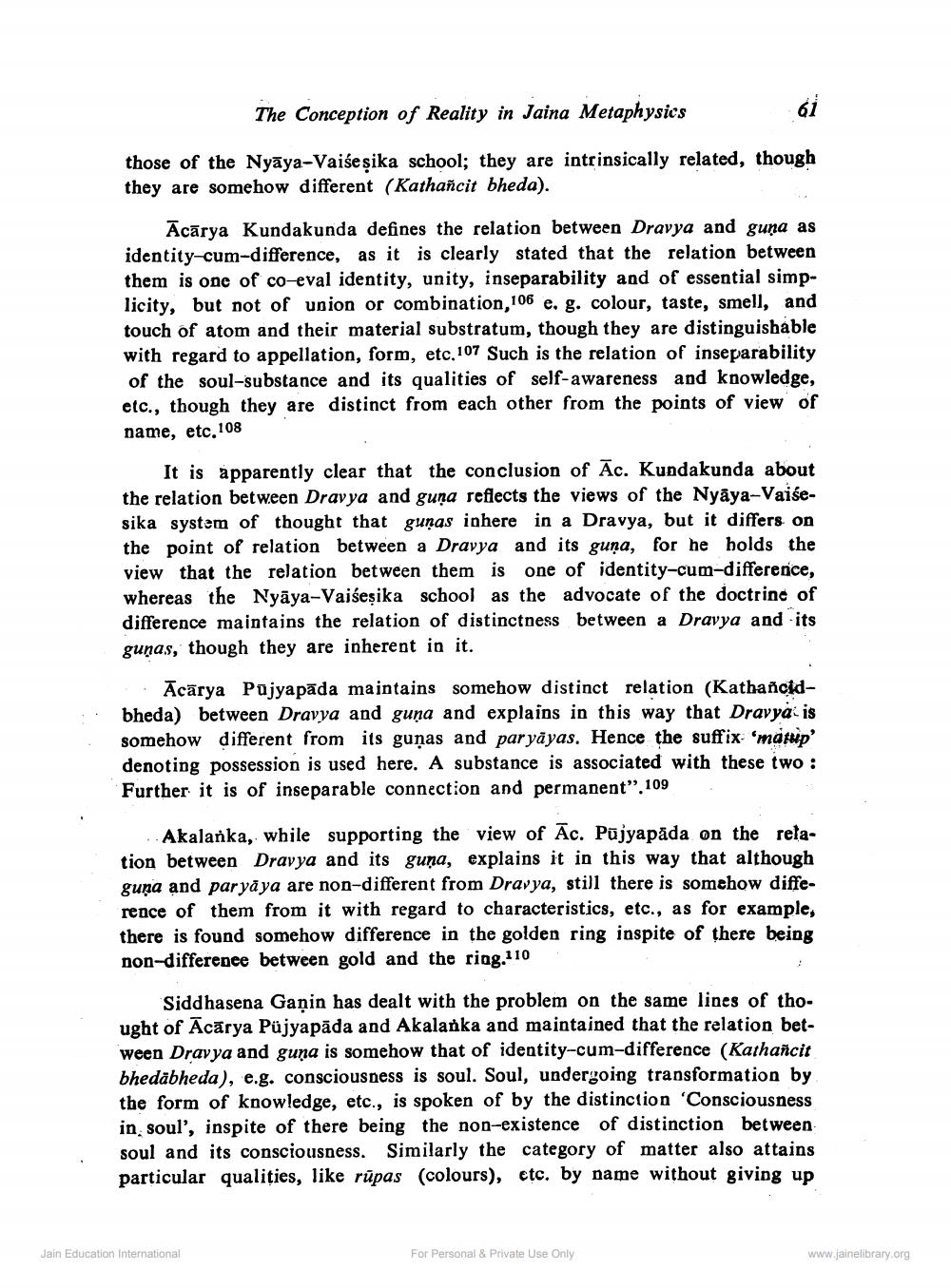________________
The Conception of Reality in Jaina Metaphysics
61
those of the Nyāya-Vaiseșika school; they are intrinsically related, though they are somehow different (Kathañcit bheda).
Ācārya Kundakunda defines the relation between Dravya and guna as identity-cum-difference, as it is clearly stated that the relation between them is one of co-eval identity, unity, inseparability and of essential simplicity, but not of union or combination,106 e. g. colour, taste, smell, and touch of atom and their material substratum, though they are distinguishable with regard to appellation, form, etc. 107 Such is the relation of inseparability
of the soul-substance and its qualities of self-awareness and knowledge, etc., though they are distinct from each other from the points of view of name, etc. 108
It is apparently clear that the conclusion of Ac. Kundakunda about the relation between Dravya and guna reflects the views of the Nyāya-Vaisesika system of thought that gunas inhere in a Dravya, but it differs on the point of relation between a Dravya and its guna, for he holds the view that the relation between them is one of identity-cum-difference, whereas the Nyāya-Vaišeșika school as the advocate of the doctrine of difference maintains the relation of distinctness between a Dravya and its gunas, though they are inherent in it.
• Ācārya Pujyapāda maintains somehow distinct relation (Kathañcidbheda) between Dravya and guņa and explains in this way that Dravyai is somehow different from its guņas and par yāyas. Hence the suffix 'mafup' denoting possession is used here. A substance is associated with these two : Further it is of inseparable connection and permanent". 109
Akalanka, while supporting the view of Āc. Pūjyapäda on the retation between Dravya and its guna, explains it in this way that although guna and paryāya are non-different from Dravya, still there is somehow difference of them from it with regard to characteristics, etc., as for example, there is found somehow difference in the golden ring inspite of there being non-difference between gold and the ring.110
Siddhasena Gaộin has dealt with the problem on the same lines of thought of Ācārya Pujyapāda and Akalanka and maintained that the relation between Dravya and guna is somehow that of identity-cum-difference (Kathañcit bhedabheda), e.g. consciousness is soul. Soul, undergoing transformation by the form of knowledge, etc., is spoken of by the distinction 'Consciousness in soul', inspite of there being the non-existence of distinction between soul and its consciousness. Similarly the category of matter also attains particular qualities, like rūpas (colours), etc. by name without giving up
Jain Education International
For Personal & Private Use Only
www.jainelibrary.org




